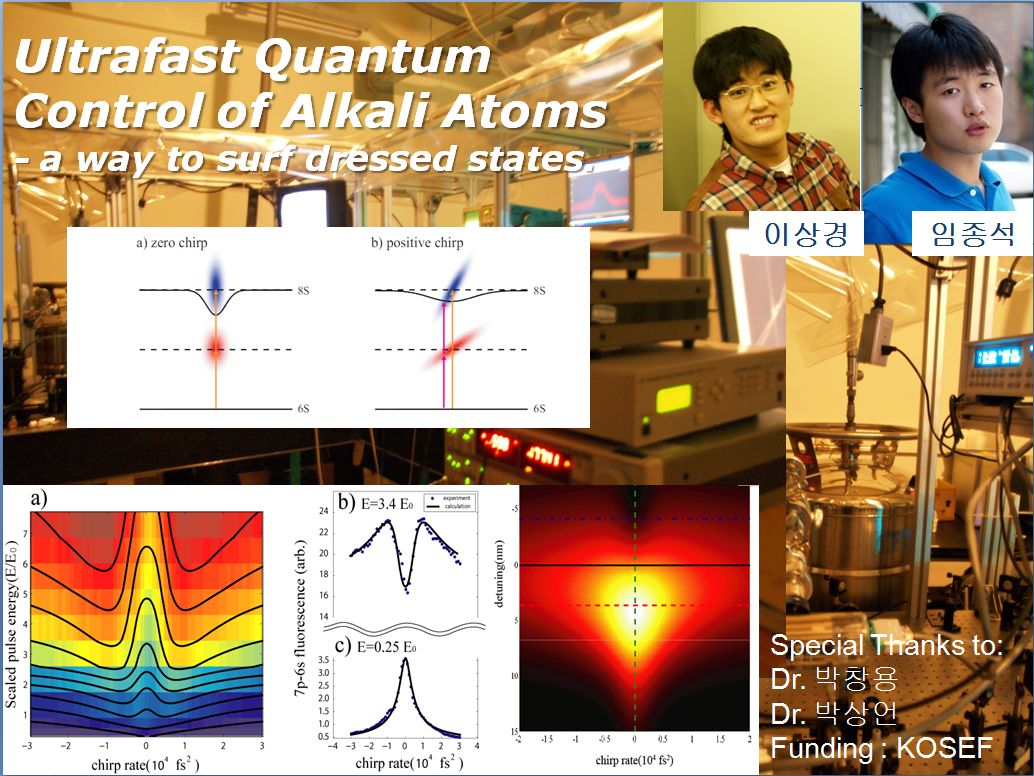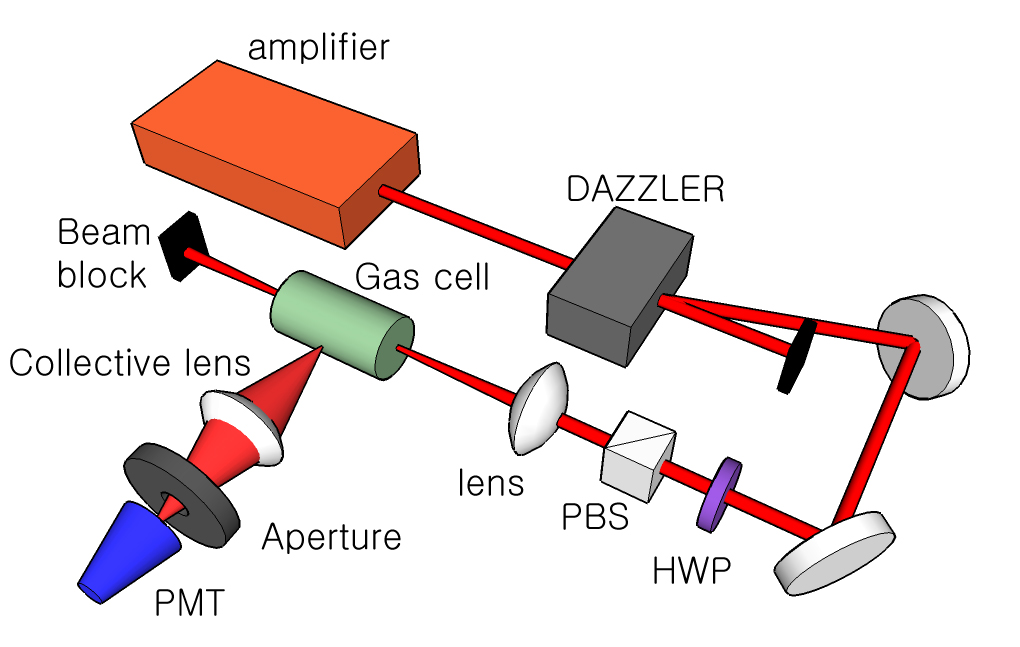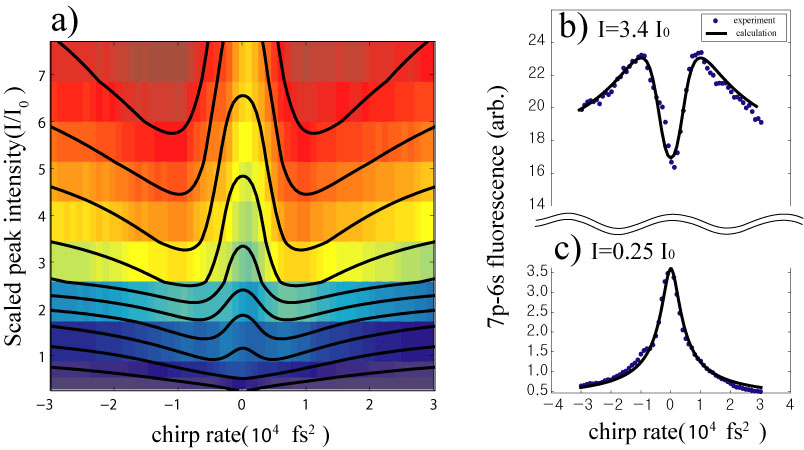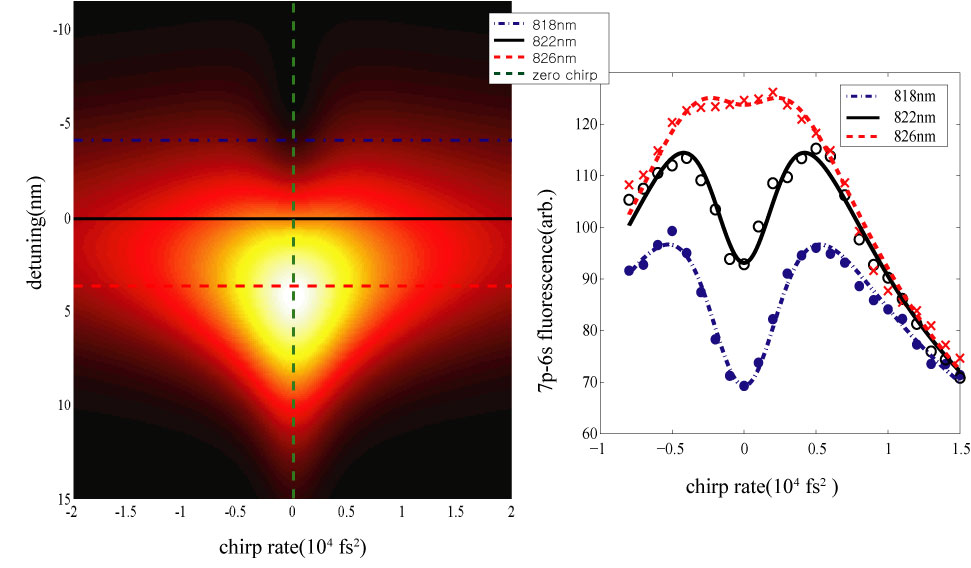Difference between revisions of "Quantum Control"
From KAIST Quantum Computing Lab Wiki
Jump to navigationJump to search| Line 3: | Line 3: | ||
[[Image:quantum control.jpg|center|500px]] | [[Image:quantum control.jpg|center|500px]] | ||
| − | A shaped ultrafast pulse makes it possible to stir a quantum system and thus control a quantum process via light-matter interaction. Two photon absorption(TPA) | + | A shaped ultrafast pulse makes it possible to stir a quantum system and thus control a quantum process via light-matter interaction. Two photon absorption(TPA) process in two-level atoms is one of the good testbed for coherent control. We study coherent control schemes for a TPA process in a strong field. For a optimal coherent scheme to enhance TPA, strong field effects(dynamic Stark shift) have been considered. |
[[Image:Setup_dazzler.jpg|center|200px]] | [[Image:Setup_dazzler.jpg|center|200px]] | ||
Revision as of 03:53, 15 September 2009
Two photon absorption in strong field
A shaped ultrafast pulse makes it possible to stir a quantum system and thus control a quantum process via light-matter interaction. Two photon absorption(TPA) process in two-level atoms is one of the good testbed for coherent control. We study coherent control schemes for a TPA process in a strong field. For a optimal coherent scheme to enhance TPA, strong field effects(dynamic Stark shift) have been considered.
In weak field reigme, a transform-limited pulse is a optimal pulse to enhance a TPA. But it is not a optimal solution in strong field. The dynamic Stark shift disturbs a TPA process.
A linear chirped pulse is more optimal than a transform-limited pulse.



